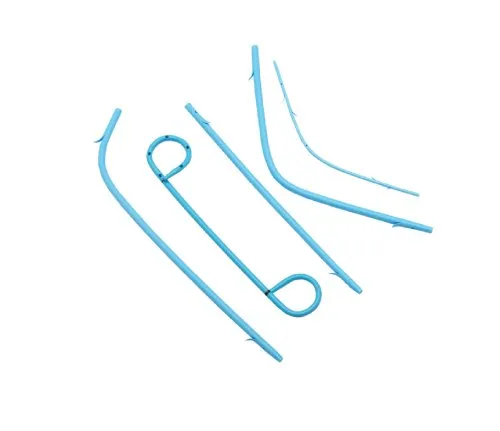
Plastic Biliary Stent: Uses, Types, Removal, and Benefits for Biliary Obstruction
A plastic biliary stent is an essential medical device used in the management of biliary obstruction, a condition where the bile ducts become blocked or narrowed. The bile ducts are vital tubes that carry bile from the liver to the small intestine to aid in digestion. When these ducts become obstructed due to various causes such as gallstones, tumors, or strictures (narrowing of the duct), bile cannot flow freely. This leads to a buildup of bile in the liver and other complications, including jaundice, cholestasis (reduced bile flow), and abdominal pain.
The primary role of a plastic biliary stent is to provide biliary drainage, which allows the bile to flow properly again. The stent is designed to keep the obstructed bile duct open, thus relieving symptoms, preventing liver damage, and improving overall liver function. The insertion of a plastic biliary stent is typically performed through a minimally invasive procedure called endoscopic retrograde cholangiopancreatography (ERCP). This technique uses an endoscope, a flexible tube with a camera, to guide the stent into the bile duct, where it remains to maintain its patency.
Intended Uses of Plastic Biliary Stents
Plastic biliary stents are primarily used for patients with bile duct obstruction, whether due to benign conditions, such as gallstones or strictures, or malignant conditions like tumors. For patients with malignant bile duct obstructions caused by cancer, a plastic stent may be used temporarily to alleviate jaundice and improve the patient’s quality of life, especially when surgery is not possible or not desired. In cases of benign obstructions, such as strictures resulting from chronic pancreatitis or previous surgeries, a plastic stent may be placed for a longer duration, typically for a few months.
The plastic stent helps prevent complications associated with bile accumulation, including infection (cholangitis) and liver damage. Additionally, plastic biliary stents are often used in palliative care for patients with advanced cancer, providing temporary relief by facilitating bile drainage.
Types of Biliary Stents
There are two primary types of biliary stents: plastic stents and metal stents. Plastic biliary stents are made from a flexible plastic material, and while they are effective for short-term relief, they are prone to becoming clogged or encrusted with bile over time. Therefore, stent replacement is often required, typically every few months, to ensure continuous function. The plastic material allows for easier insertion compared to metal stents, which makes them suitable for short-term management, such as before surgery or when the blockage is not expected to be permanent.
On the other hand, metal stents are generally preferred for long-term management of bile duct obstructions, as they are more durable and less likely to become blocked or encrusted. These stents are usually self-expanding, allowing them to fit snugly within the bile duct. However, metal stents are more expensive and more difficult to insert than plastic stents.
Removal and Management of Plastic Biliary Stents
The removal of a plastic biliary stent is generally performed through a repeat ERCP procedure. If the underlying obstruction has been resolved, or if the stent has become blocked or encrusted, it may need to be removed or replaced. During this procedure, the physician carefully removes the stent using the endoscope and may place a new stent if necessary.
In some cases, the plastic stent may remain in place for longer periods, depending on the patient’s condition and the effectiveness of the stent in alleviating the obstruction. However, because plastic stents can be more prone to clogging, regular monitoring and stent replacement are essential to ensure that the bile duct remains open and functioning properly.
Conclusion
Plastic biliary stents play a crucial role in the management of biliary obstruction, offering a temporary yet effective solution for patients who experience bile duct blockages due to various causes. By providing biliary drainage and allowing for proper bile flow, plastic stents alleviate symptoms such as jaundice and cholestasis. While plastic stents are suitable for short-term use, they require periodic stent replacement due to potential complications like clogging. In contrast, metal stents are preferred for long-term solutions but come with their own set of considerations. Regardless of the type, both stent types are critical in maintaining patient comfort and preventing serious complications associated with bile duct obstructions.


